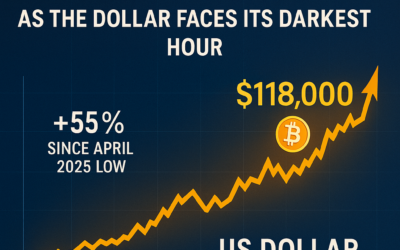Introduction
India’s equity derivatives market is on fire — but not everyone is getting rich. Behind record-breaking volumes and eye-catching trades lies a troubling reality: retail investors are getting burned chasing short-term profits. As SEBI cracks down and firms like Jane Street face bans, the market’s future hangs in the balance. Is this the rise of a new investing powerhouse, or a ticking time bomb for the unprepared?
One of the Best Broker in Europe
While Europe boasts some of the most reliable and regulated trading platforms, Indian retail traders are flocking to local brokers lured by social media hype. But where platforms in Europe prioritize investor protection and transparency, India’s explosion in options trading has opened the floodgates to speculative excess.
Financial Performance
India now accounts for nearly 60% of global equity derivatives volumes. Yet according to SEBI, more than 90% of retail F&O traders lost money last year — amounting to ₹1.06 trillion (roughly $12.5 billion) in losses. This financial disconnect between volume and returns raises critical concerns about market sustainability.
Key Highlights
- 11 million individuals traded equity derivatives in the last financial year
- Over 75% earned less than ₹500,000/year
- Over 40% of traders were under 30
- Weekly expiries dominate short-term speculation
- Losses surged 41% year-over-year
Profitability and Valuation
The Indian options boom may look profitable from the outside — but zoom in and it’s mostly institutions reaping the benefits. With sophisticated arbitrage and algorithmic systems, large players can exploit the inefficiencies created by inexperienced retail traders who rely on YouTube influencers and Telegram tips rather than valuation or fundamentals.
Debt and Leverage
Retail investors are using highly leveraged intraday strategies, with minimal income buffers. This exposes them to massive downside risk on even minor market moves. Unlike institutions that hedge with precision, most traders are exposed and reactive, not strategic — a recipe for high debt and margin calls.
Growth Prospects
India’s growth in digital finance is undeniable. Apps are booming, IPOs are heating up, and fintech penetration is deepening. But without parallel growth in financial education, risk awareness, and responsible regulation, this trend could end in a bubble — or worse, a mass exit of burned-out retail investors.
Technical Analysis
Despite the volatility, the Nifty 50 has remained above 25,000 and gained over 7% YTD. However, short-term corrections loom. The recent bar on Jane Street and SEBI’s proposed ban on weekly expiries could disrupt momentum and bring temporary sell-offs. If that happens, retail stop losses could trigger a cascade.
Potential Catalysts
- SEBI regulation: Weekly expiry restrictions
- Legal outcomes from Jane Street’s case
- Macroeconomic events (CPI, rate decisions)
- Global inflation and U.S. interest rate trajectory
- IPO rush (Travel Food Services, Smartworks, etc.)
- Influencer crackdown by Indian authorities
Leadership and Strategic Direction
SEBI is walking a tightrope: attract foreign capital and protect retail investors. Its bold actions signal a more aggressive regulatory stance, but enforcement consistency remains key. Meanwhile, institutions will continue to adapt — while retail remains largely underprepared and underinformed.
Impact of Macroeconomic Factors
With U.S. inflation cooling and the Fed likely to cut rates, foreign capital may flow more freely toward emerging markets. India could benefit — if it maintains market credibility. Political and regulatory stability will determine whether India’s derivatives market becomes a global hub or a speculative wild west.
Total Addressable Market (TAM)
India’s retail trading population is vast and growing. By 2030, over 150 million Indians could participate in financial markets. But if the majority remain speculative and untrained, the TAM becomes a liability, not a strength.
Market Sentiment and Engagement
The market is currently overstimulated by FOMO, driven by influencers, Telegram signals, and social hype. This creates a volatile, emotionally charged environment where volume does not equal value. Until market behavior matures, volatility will remain the norm — not the exception.
Conclusions, Target Price Objectives, and Stop Losses
Short-term (1–2 months): Expect Nifty 50 to consolidate between 24,800–25,600 due to regulatory concerns and potential market corrections.
Medium-term (3–6 months): Recovery likely, targeting 27,000+, assuming no further bans and positive IPO momentum.
Long-term (12–24 months): If regulatory improvements succeed and financial literacy rises, the index could breach 30,000 — making India a cornerstone in global capital markets.
Suggested stop-loss levels for leveraged traders:
- Short-term trades: -5% from entry
- Long-term: Trailing stop loss of -8%
Discover More
For more insights into analyzing value and growth stocks poised for sustainable growth, consider this expert guide. It provides valuable strategies for identifying high-potential value and growth stocks.
We also have other highly attractive stocks in our portfolios. To explore these opportunities, visit our investment portfolios.
This analysis serves as information only and should not be interpreted as investment advice. Conduct your own research or consult with a financial advisor before making investment decisions.
Looking to Educate Yourself for More Investment Strategies?
Check out our free articles where we share our top investment strategies. They are worth their weight in gold!
📖 Read them on our blog: Investment Blog
For deeper insights into ETF investing, trading, and market strategies, explore these expert guides:
📘 ETF Investing: ETFs and Financial Serenity
📘 Technical Trading: The Art of Technical & Algorithmic Trading
📘 Stock Market Investing: Unearthing Gems in the Stock Market
📘 Biotech Stocks (High Risk, High Reward): Biotech Boom
📘 Crypto Investing & Trading: Cryptocurrency & Blockchain Revolution
Did you find this article insightful? Subscribe to the Bullish Stock Alerts newsletter so you never miss an update and gain access to exclusive stock market insights: https://bullishstockalerts.com/#newsletter.
Avez-vous trouvé cet article utile? Abonnez-vous à la newsletter de Bullish Stock Alerts pour recevoir toutes nos analyses exclusives sur les marchés boursiers : https://bullishstockalerts.com/#newsletter.









0 Comments